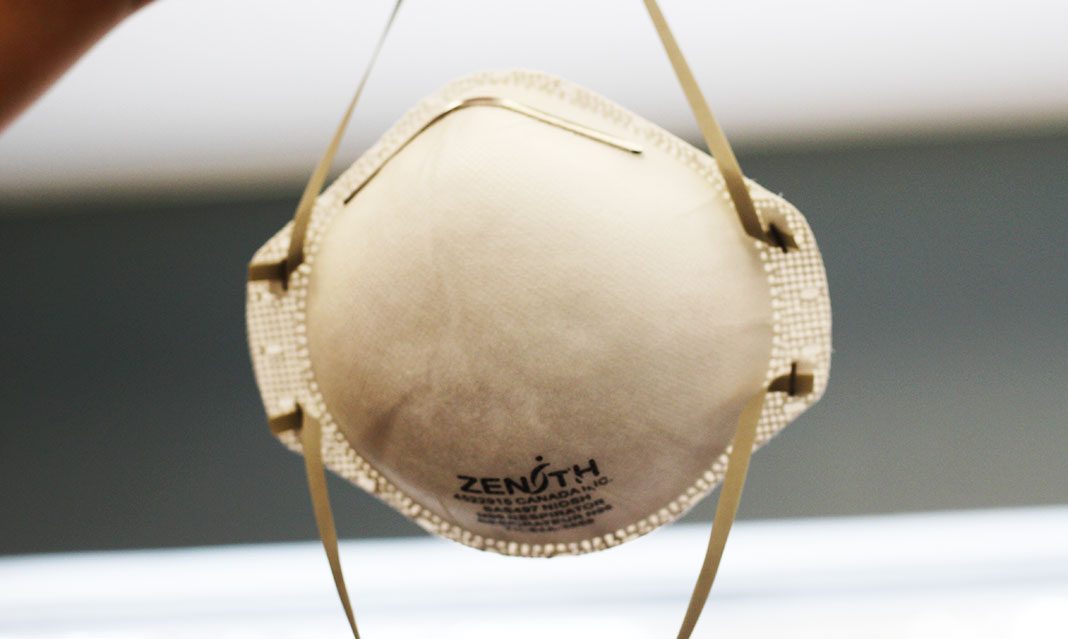At the time of publishing, the 2019-nCoV has claimed the lives of at least 305 people and infected more than 14,000 people globally. The Medium consulted Dr. Steven Short, an associate professor of biology and associate chair of research at UTM who studies viruses in aquatic environments, to find out more about how the 2019-nCoV surfaced, how the virus was introduced in humans, and how it can be combatted.
As to how the 2019-nCoV originated, Short explains that in viruses such as the coronavirus, “new variants are constantly created when the virus replicates. The molecular machinery coronaviruses encode to make copies of their RNA genome are error prone, so mistakes are made, and mutant viruses are created when the virus replicates.”
The 2019-nCoV was likely transmitted to humans from another species. While Short cannot confirm that the source of transmission were bats, he says it is probable since “different species of bats are known reservoirs of many kinds of viruses that cause zoonotic diseases” – diseases which can be transmitted between vertebrate animals and humans. The 2019-nCoV’s genome sequence is similar to “to a group of coronaviruses called betacoronaviruses, the group that includes SARS-CoV and MERS-CoV.” While the evidence “suggests [that] SARS-CoV may have jumped into humans (after a mutation-enabled infection and replication in human respiratory cells) from civet cats [and] camels may be the direct source of MERS-CoV,” the “main reservoir for both [these] coronaviruses” may have been bats who are able to infect other mammals.
When a new virus is discovered, “the first steps are generally to sequence the genome of the infectious agent and rapidly develop diagnostic tools – generally commonplace molecular biology techniques like PCR and Real Time PCR.” Short mentions that the Centers for Disease Control and Prevention (CDC) have already “publicly posted some of these diagnostic protocols for 2019-nCoV screening.” A vaccine is currently being developed; however, it could take more than a year before the vaccine “make[s] it through the rigors of clinical trials.”
Short affirms that “epidemics and pandemics can be resolved through public health interventions such as contact tracing, quarantine, [and] travel advisories that help break chains of infection.” Vaccination is another important safeguard and has “proved to be very effective” in combating the viruses such as the smallpox virus – which was declared eradicated in 1980 – and “a cattle virus [which] caused a disease called rinderpest” and “was declared eradicated in 2011.” Short does acknowledge that “vaccine development is not always successful, and effective vaccines have not been developed for many types of viruses.”
The Medium also consulted Dr. Eleanor Fish, a Canada Research Chair in Women’s Health and Immunobiology, a professor of Immunology at the University of Toronto, and a Senior Scientist at the University Health Network in Toronto to learn what the 2019-nCoV can do to the human body, how the virus is transmitted, and how hospitals and healthcare officials across Canada are treating 2019-nCoV.
As Fish explains, the 2019-nCoV “infects the respiratory tract. The result is an inflammatory response that leads to the lungs becoming occluded. This is the issue – lack of oxygenation. Patients require nasal prongs or, in the most severe cases, intubation. If the inflammatory response persists and the lungs become occluded to the extent that oxygenation to the body is drastically affected – then the individual may die as their organs fail.” However, with the proper healthcare, a healthy human can overcome the 2019-nCoV without a vaccine.
Human to human transmission has been confirmed and the virus can be transmitted through droplets produced by sneezing, coughing, and spitting. So far, the 2019-nCoV appears to be “less virulent than [the] SARS virus” and it “appears that [the] elderly [are the] most susceptible to severe disease [and are] also at higher risk of death.”
Since there are no vaccines or approved therapeutics available, Fish recommends that hospitals provide “supportive care including nasal prongs or intubation to provide oxygenation.” Fish used interferons – a group of proteins produced and released from cells in response to a virus infection – against “SASRs during [the] 2003 outbreak in Toronto as a treatment with positive outcomes.” The treatment protocol was shared with the World Health Organization (WHO) and could be used against the 2019-nCoV as well.
Fish states that masks are “really only necessary for healthcare workers in direct contact with severely infected and infectious individuals” and that the best strategy to protect oneself from the 2019-nCoV is to “wash hands frequently [and] avoid touching hands to mouth, nose and eyes.”
Overall, Canada is well-prepared to deal with the 2019-nCoV after the SARS outbreak. As Fish details, there is now “better communication across the country and internationally, more rapid virus testing, better screening, more infrastructure in place for infection control, [and] policies in place to prevent transmission.”



